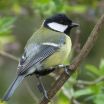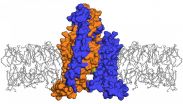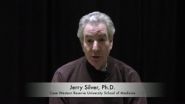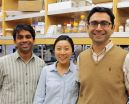Arabian Sea humpback whale population may have been isolated for about 70,000 years
The usually migratory humpback whale has a long isolated population in Arabian Sea
2014-12-03
(Press-News.org) A population of humpback whales that resides in the Arabian Sea may have been isolated for ~70,000 years, according to a study published December 3, 2014 in the open-access journal PLOS ONE by Cristina Pomilla, Ana Rita Amaral, Howard Rosenbaum, and Tim Collins of the Wildlife Conservation Society, the American Museum of Natural History, and their colleagues.
The small, non-migratory population of Arabian Sea humpback whales is currently classified as "Endangered" on the IUCN Red List of Threatened Species. Scientists have limited data on the difficult-to-study population, including its relationship to other humpback whale populations. The authors of this study analyzed both mitochondrial and nuclear DNA extracted from nearly 70 Arabian Sea humpback whale tissue samples and compared them to datasets from populations in the Southern Hemisphere and North Pacific.
The results show that the Arabian Sea humpback whale population is highly distinct from Southern Hemisphere and North Pacific populations. Gene flow and divergence estimates suggest the population originated from the Southern Indian Ocean, but indicate that it has been isolated for approximately 70,000 years, which is unusual for a species that is typically highly migratory. Genetic diversity values are significantly lower than those obtained for Southern Hemisphere populations, and the authors' findings provide strong indication that this is the world's most isolated humpback whale population. The authors conclude that the low genetic diversity and population abundance estimates, combined with anthropogenic threats, may raise concern for the populations' survival and suggests that a reassessment of their conservation status and management strategies is merited.
INFORMATION:
In your coverage please use this URL to provide access to the freely available paper: http://dx.plos.org/10.1371/journal.pone.0114162
Citation: Pomilla C, Amaral AR, Collins T, Minton G, Findlay K, et al. (2014) The World's Most Isolated and Distinct Whale Population? Humpback Whales of the Arabian Sea. PLoS ONE 9(12): e114162. doi:10.1371/journal.pone.0114162
Funding: Funding and other in-kind support for the work was provided by: The Environment Society of Oman, Shell Oman Marketing, Petroleum Development Oman, The UK Foreign and Commonwealth Office, Ford Middle East, Veritas Geophysical, Salalah Port Services, Five Oceans LLC, Tawoos LLC, The Peter Scott Trust for Education Research in Conservation, Marina Bandar al Rowdha, DHL, Mustafa Sultan Communications, The ABA School Muscat, The British School Muscat, The Sultan School Muscat, The Embassy of the United States in Muscat, Emirates Airlines, Oman Air, Cathay Pacific, KPMG, Muscat Pharmacy, OHI Marine, Truck Oman, W.J. Towell and Co., Han Padron Associates, Mark Rental Cars, WS Atkins and the Wildlife Conservation Society. The funders of this study had no role in study design, data collection and analysis, decision to publish, or preparation of the manuscript.
Competing Interests: The authors have declared that no competing interests exist.
ELSE PRESS RELEASES FROM THIS DATE:
2014-12-03
Aspects of the culture of research in UK higher education institutions (HEIs) can encourage poor research practices and hinder the production of high quality science, according to scientists who took part in a project exploring the ethical consequences of the culture of research led by the Nuffield Council on Bioethics.
The findings of the project, which included a survey of almost 1000 scientists and others, suggest that scientists are motivated in their work to find out more about the world and benefit society, and that they believe collaboration, multidisciplinarity, ...
2014-12-03
Birds learn new foraging techniques by observing others in their social network, 'copycat' behaviour that can sustain foraging 'traditions' that last years, according to a study of how innovations spread and persist in wild great tits (Parus major).
The study involved experiments with eight local populations of great tits in Wytham Woods, Oxfordshire (UK). In five of the populations two male birds were trained to slide a puzzle box door either to the left or to the right. In three control groups two males were captured but not trained. The birds were then released back ...
2014-12-03
Whether stubbing a toe or stroking a cat, the sensation of touch starts out as a mechanical force that is then transformed into an electrical signal conveying pain or other sensations. Tiny channels in neurons act as translators by helping to formulate that signal to the brain. However, scientists know little about the fine details of how these channels work.
New work at Rockefeller University has revealed that one such channel in humans responds to mechanical force using a never-before-seen mechanism. Researchers led by Roderick MacKinnon, John D. Rockefeller Jr. Professor ...
2014-12-03
A team of biomedical engineers at Washington University in St. Louis, led by Lihong Wang, PhD, the Gene K. Beare Distinguished Professor of Biomedical Engineering, has developed the world's fastest receive-only 2-D camera, a device that can capture events up to 100 billion frames per second.
That's orders of magnitude faster than any current receive-only ultrafast imaging techniques, which are limited by on-chip storage and electronic readout speed to operations of about 10 million frames per second.
Using the Washington University technique, called compressed ultrafast ...
2014-12-03
VIDEO:
NIH-funded scientists developed a promising new drug that may lead to spinal cord injury treatments.
Click here for more information.
Injections of a new drug may partially relieve paralyzing spinal cord injuries, based on indications from a study in rats, which was partly funded by the National Institutes of Health
The results demonstrate how fundamental laboratory research may lead to new therapies.
"We're very excited at the possibility that millions of people ...
2014-12-03
Case Western Reserve scientists have developed a new chemical compound that shows extraordinary promise in restoring function lost to spinal cord injury. The compound, which the researchers dubbed intracellular sigma peptide (ISP), allowed paralyzed muscles to activate in more than 80 percent of the animals tested. The remarkable study, partly funded by the National Institutes of Health, appears in the December 3 edition of the journal Nature.
Case Western Reserve University School of Medicine Professor of Neurosciences Jerry Silver, PhD, the senior author, led an international ...
2014-12-03
Pilots are trained to guard against vertigo: a sudden loss of the sense of vertical direction that renders them unable to tell "up" from "down" and sometimes even leads to crashes. Coming up out of a subway station can produce similar confusion: For a few moments, you are unsure which way to go, until regaining your sense of direction. In both cases, the disorientation is thought to be caused by a temporary malfunction of a brain circuit that operates as a three-dimensional (3D) compass.
Weizmann Institute scientists have now for the first time demonstrated the existence ...
2014-12-03
Extensive areas of the world's deltas -- which accommodate major cities such as Shanghai, Dhaka and Bangkok -- will be drowned in the next century by rising sea levels, according to a Comment piece in this week's Nature. In the article, Dr. Liviu Giosan, a geologist with the Woods Hole Oceanographic Institution (WHOI), and colleagues call for maintenance efforts to be started now to avert the loss of vast expanses of coastline, and the consequent losses of ecological services, economic and social crises, and large-scale migrations.
Problems start upstream: deltas are built ...
2014-12-03
HOUSTON - (Dec. 3, 2014) - A novel mechanism - similar to how normal tissue stem cells respond to wounding - might explain why bladder cancer stem cells actively contribute to chemo-resistance after multiple cycles of chemotherapy drug treatment. Targeting this "wound response" of cancer stem cells can potentially provide a novel approach for therapeutic invention, said researchers from the National Cancer Institute-designated Dan L. Duncan Cancer Center at Baylor College of Medicine.
The results of their study appear online in the journal Nature today.
"Treatment ...
2014-12-03
LA JOLLA, CA--December 3, 2014--A team led by biologists at The Scripps Research Institute (TSRI) has solved a long-standing mystery in neuroscience by identifying the "mechanoreceptor" protein that mediates the sense of touch in mammals.
Mice that lack the Piezo2 ion-channel protein in their skin cells and nerve endings lose nearly all their sensitivity to ordinary light touch, but retain a mostly normal sensitivity to painful mechanical stimuli.
"We can say with certainty that Piezo2 is the principal touch sensor in mammals," said Ardem Patapoutian, professor at TSRI ...
LAST 30 PRESS RELEASES:
[Press-News.org] Arabian Sea humpback whale population may have been isolated for about 70,000 years
The usually migratory humpback whale has a long isolated population in Arabian Sea




